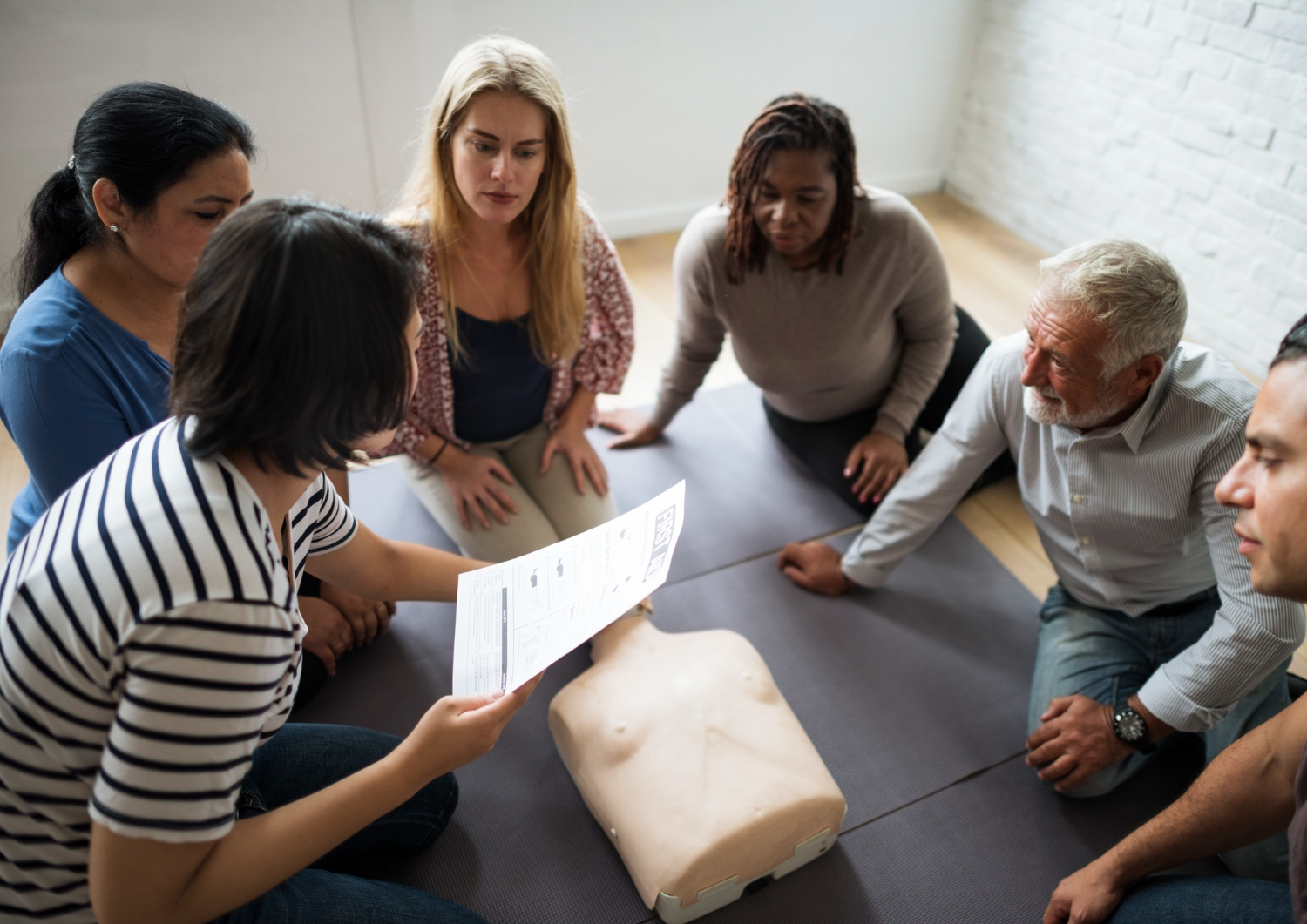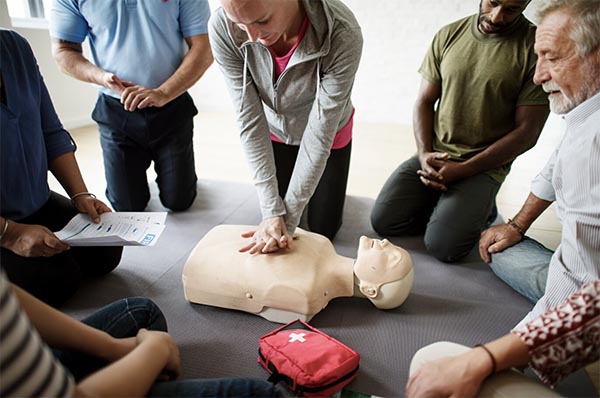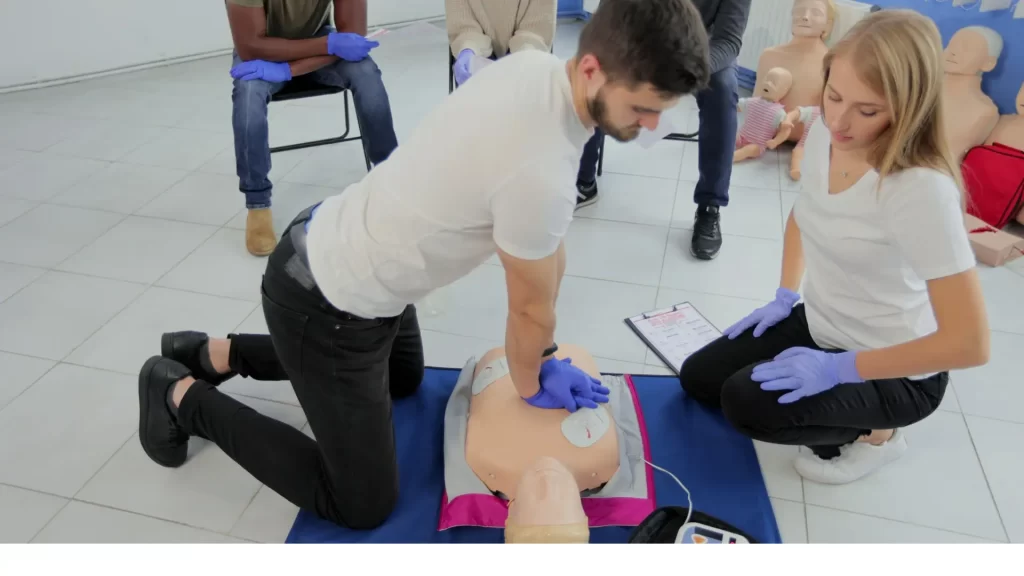
In the fast-paced, sometimes unpredictable environment of a classroom or school, emergencies can happen without warning. Whether it’s a student choking in the cafeteria, a colleague collapsing in the hallway, or a sudden medical event during recess, being prepared is not just an option, it’s a necessity. For teachers and educators in Washington D.C., having up-to-date CPR certification is a critical part of that preparedness. It’s a skillset that empowers you to act decisively and confidently in a crisis, potentially saving a life.
But what exactly goes into a CPR certification class? Many teachers wonder what to expect, from the curriculum to the hands-on practice. It’s a valid question, as knowing the process can help you feel more comfortable and ready for the training. This comprehensive guide will walk you through the journey of a CPR certification class, specifically the American Heart Association (AHA) Basic Life Support (BLS) course, and explain why it’s the gold standard for educators. We’ll cover everything from the core skills you’ll learn to the supportive environment you’ll experience, all designed to make you a confident and capable first responder.
What Essential Skills Will You Learn?
A CPR certification class is much more than just learning chest compressions. It’s a holistic training experience that equips you with a wide range of life-saving techniques. For teachers, this is especially important, as you are responsible for the well-being of a diverse group of individuals, from young children to adults.
The core of the training focuses on the foundational skills of CPR, which stands for cardiopulmonary resuscitation. This is the emergency procedure used when someone’s breathing or heart has stopped. The class will introduce you to the ABCs of CPR: Airway, Breathing, and Compressions.
- Airway: You will learn how to check the scene for safety and assess the person’s responsiveness. You’ll also be taught how to open the victim’s airway to ensure they can breathe freely.
- Breathing: This section covers how to provide rescue breaths effectively, which involves using a barrier device to deliver air into the victim’s lungs.
- Compressions: The class will teach you the proper hand placement and depth for performing chest compressions on adults, children, and infants. This is a critical skill that helps to circulate blood and oxygen to the brain and other vital organs until professional medical help arrives.
Beyond the basics, the class will also cover a variety of other vital skills. You will learn how to use an automated external defibrillator (AED), a portable electronic device that can automatically diagnose life-threatening cardiac arrhythmias and treat them through defibrillation. Understanding how to operate an AED is a crucial part of the modern BLS curriculum. You’ll also learn how to respond to choking emergencies, a common occurrence in school settings, and how to perform basic first aid, such as managing bleeding or treating minor injuries.

Why Is the American Heart Association (AHA) BLS Course the Industry Standard for Educators?
When it comes to CPR certification, not all courses are created equal. For teachers and educators, choosing a certification that is widely recognized and respected is paramount. The American Heart Association (AHA) Basic Life Support (BLS) course is considered the gold standard, and for good reason. It is the most widely accepted certification nationwide, making it a reliable choice for educators who might change schools or states.
The AHA is a non-profit organization that has been a leader in cardiovascular health for over a century. Their BLS course is developed by a team of experts and is based on the latest scientific research and guidelines. This ensures that the information you are learning is accurate, up-to-date, and effective. The certification is also OSHA-approved, which means it meets the safety and health standards set by the Occupational Safety and Health Administration.
- The AHA BLS course is designed specifically for healthcare providers, but its comprehensive nature makes it perfect for educators. You will learn advanced techniques and a deeper understanding of the “why” behind the skills.
- The certification is recognized by schools, school districts, and educational institutions across the country, so you can be confident that your training will meet your employer’s requirements.
- The AHA provides high-quality training materials, including workbooks and instructional videos, which supplement the in-person class.
- The focus is on practical, hands-on skills, ensuring you can perform the techniques with confidence in a real-world emergency.
Choosing an AHA BLS course means you are not just getting a piece of paper; you are gaining a legitimate, respected, and effective set of skills that will be invaluable in your career.
What is the Learning Environment Like and How is the Training Delivered?
The thought of a CPR class can be intimidating for some. You might imagine a high-pressure, stressful environment. However, this is far from the reality of a quality training course. CPR Classes Near Me understands that the best way to learn these critical skills is in a relaxed and supportive environment.
Classes are structured to be both informative and engaging. You won’t just be sitting through a lecture; you’ll be an active participant.
- Hands-On Practice: The majority of the class is dedicated to hands-on practice with manikins. You will practice chest compressions, rescue breaths, and using an AED under the guidance of a highly trained instructor. This practical experience is essential for building muscle memory and confidence.
- Expert Instructors: All classes are taught by experienced and highly trained instructors. They are not only knowledgeable about the subject matter but also skilled at creating a positive and encouraging atmosphere. They will answer all your questions, provide constructive feedback, and guide you every step of the way.
- Low-Stress Environment: Instructors understand that learning CPR is a serious topic, but they also know that a relaxed setting helps students learn better. They create a no-judgment zone where you can make mistakes and learn from them without feeling embarrassed. This supportive approach is key to mastering the skills.
- Real-World Scenarios: The instructors will often use real-world scenarios to help you apply the skills you’ve learned. They might present a hypothetical situation and ask you to demonstrate the correct steps, which helps you think critically and apply the knowledge you’ve gained.
The training is designed to be accessible and effective for everyone, regardless of their background or previous medical knowledge. You don’t need to be a healthcare professional to excel in a BLS class; you just need a willingness to learn and an open mind.
How Can You Get Your Certification and How Quickly Will It Arrive?
Once you have completed the class and demonstrated your proficiency in the skills, you will be on your way to receiving your official certification. For many, this is one of the most exciting parts of the process. One of the major benefits of a class with CPR Classes Near Me is the speed at which you receive your certification.
Gone are the days of waiting weeks for a physical card to arrive in the mail. The modern certification process is streamlined and efficient.
- Same-Day E-Card: You will receive your official certification eCard on the very same day you complete the class. This is incredibly convenient, especially if you have a tight deadline for your school or employer.
- Instant Access: The eCard is a digital certification that you can access immediately online. You can print it out, save it to your phone, or email it directly to your school administration. This instant access ensures that you can prove your certification status without any delay.
- OSHA-Approved: The certification you receive is not only an official AHA eCard but is also OSHA-approved. This means it is accepted by a wide variety of employers, including those in the education sector, making it a valuable asset to your professional portfolio.
The efficiency of this process means you can complete your training and have the necessary documentation in hand without any logistical headaches. This is one less thing for you to worry about as you prepare for the school year.

Conclusion
For teachers and educators in Washington D.C., CPR certification is more than just a requirement; it’s a profound act of responsibility and care for the students and colleagues you interact with every day. The American Heart Association (AHA) Basic Life Support (BLS) course provides you with the skills, confidence, and knowledge to handle emergencies effectively. From mastering the essential techniques of CPR to understanding how to use an AED, you will leave the class feeling empowered to act.
The supportive and hands-on environment, led by highly trained instructors, ensures that your learning experience is both educational and stress-free. With the added benefit of receiving your official, OSHA-approved eCard on the same day, you can quickly and easily provide proof of certification to your school. Being prepared for the unexpected is one of the most valuable things you can do in an educational setting. Taking a CPR certification class is a simple, effective, and critical step toward creating a safer environment for everyone in your school.
Ready to get certified and become a first responder in your school?
FAQs about CPR Certification for Teachers in Washington D.C.
Q: Why do teachers need CPR certification?
A: Teachers are often the first responders in a school emergency. They work with a diverse group of people, from young students to fellow adults, and a medical emergency can happen at any time. CPR certification provides them with the life-saving skills to act immediately and effectively until professional medical help arrives. Many school districts and educational institutions require CPR certification for their staff to ensure a safe environment for all students and employees.
Q: What is the difference between CPR and BLS certification?
A: CPR (Cardiopulmonary Resuscitation) is the core skill of chest compressions and rescue breaths. BLS (Basic Life Support) is a more comprehensive course that includes CPR for adults, children, and infants, as well as the use of an AED (Automated External Defibrillator), how to handle choking emergencies, and other basic first aid skills. For teachers, BLS is the preferred and often required certification because it covers a broader range of life-threatening situations they might encounter in a school setting.
Q: How long is the CPR certification valid?
A: The American Heart Association (AHA) BLS certification is valid for two years. To maintain your certification, you must renew it before it expires by taking a renewal course. It is crucial to stay up-to-date with your skills and knowledge, as the AHA periodically updates its guidelines based on the latest scientific research.
Q: How long does a CPR certification class take?
A: A typical CPR certification class, like the American Heart Association (AHA) BLS course, usually takes a few hours to complete. The exact duration can vary slightly depending on the class format, the number of participants, and the instructor’s pace. The training includes a combination of video-based learning, hands-on practice with manikins, and a skills assessment.
Q: Will I receive a physical card after the class?
A: No, you will receive an official AHA eCard (electronic card) instead of a physical card. This eCard is issued on the same day you complete the class and is just as valid as a physical card. You can easily print a copy for your records or share the digital file with your employer. The eCard system is a modern, efficient way to manage and verify certifications.
Q: Are these classes suitable for complete beginners?
A: Yes, absolutely. The American Heart Association (AHA) BLS course is designed for individuals with little to no medical background. The highly trained instructors at CPR Classes Near Me create a supportive and relaxed environment where beginners can feel comfortable and confident while learning these new skills. The curriculum is presented in an easy-to-understand format with plenty of hands-on practice to ensure everyone masters the techniques.

Leave a Reply